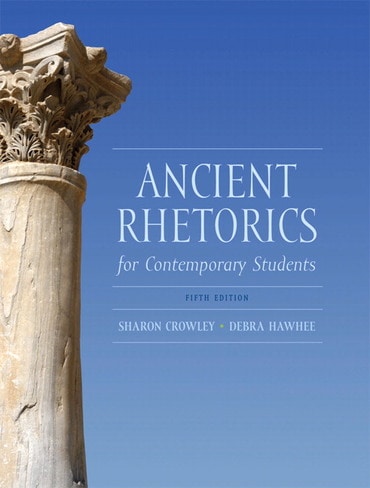
Ancient Rhetorics for Contemporary Students, 5th edition
Published by Pearson (September 30, 2011) © 2012
- Sharon Crowley
- Debra Hawhee
Price Reduced From: $186.65
This product is expected to ship within 3-6 business days for US and 5-10 business days for Canadian customers.
Title overview
Ancient Rhetorics for Contemporary Students revives the classical strategies of ancient Greek and Roman rhetoricians and adapts them to the needs of contemporary writers and speakers.
This fresh interpretation of the ancient canons of composing--invention, arrangement, style, memory, and delivery--shows that rhetoric, as it was practiced and taught by the ancients, was an intrinsic part of daily life and of communal discourse about current events. The book presents stasis theory, common and special topics, formal topics, ethos, pathos, extrinsic proofs, and Aristotelian means of reasoning, and it places particular emphasis on the classic balance between principles and practice by offering ample opportunities for students to develop habits of rhetorical thinking and composing. The authors' engaging discussion and their many contemporary examples of ancient rhetorical principles present rhetoric as a set of flexible, situational practices. This practical history draws the most relevant and useful concepts from ancient rhetorics and discusses, updates, and offers them for use in the contemporary composition classroom.
